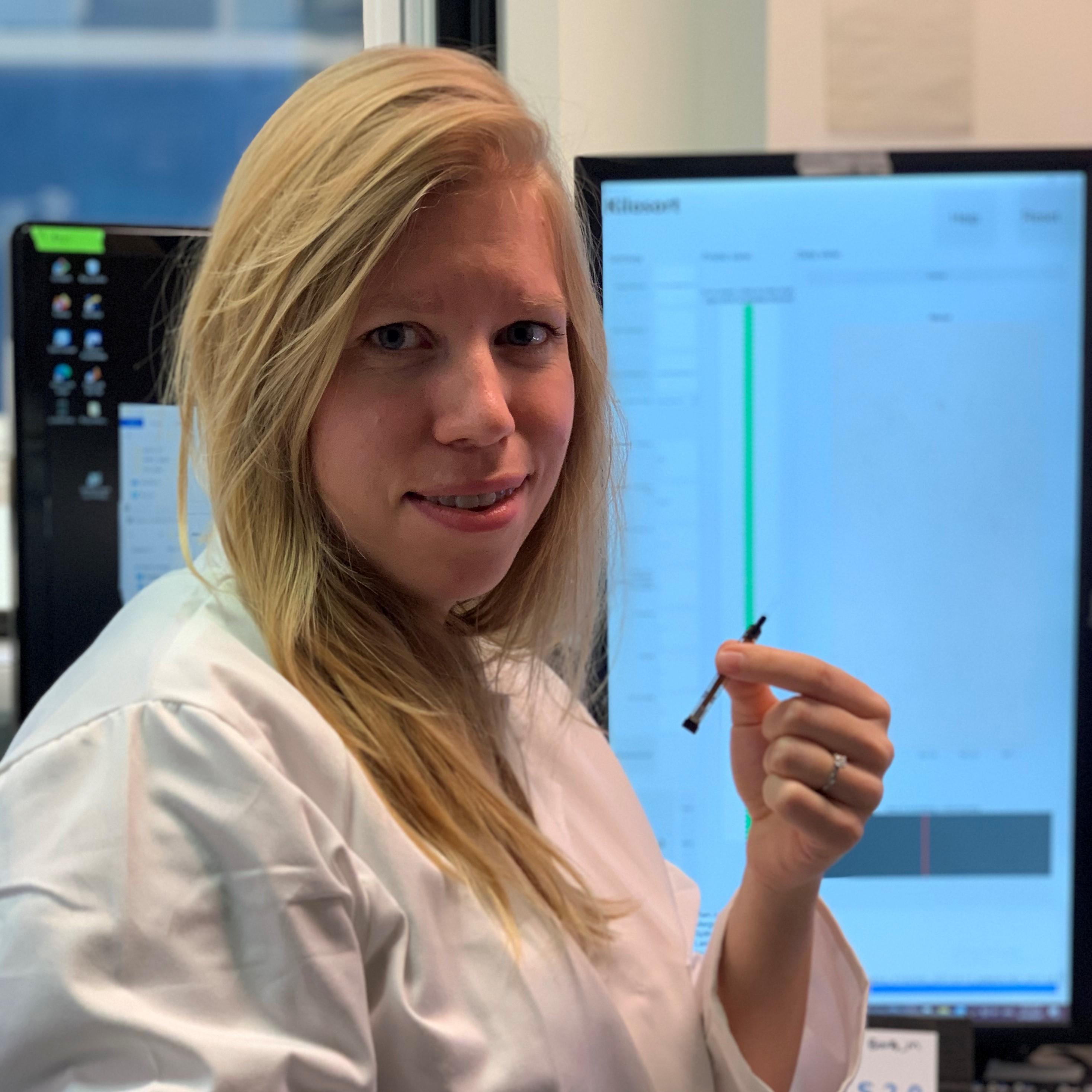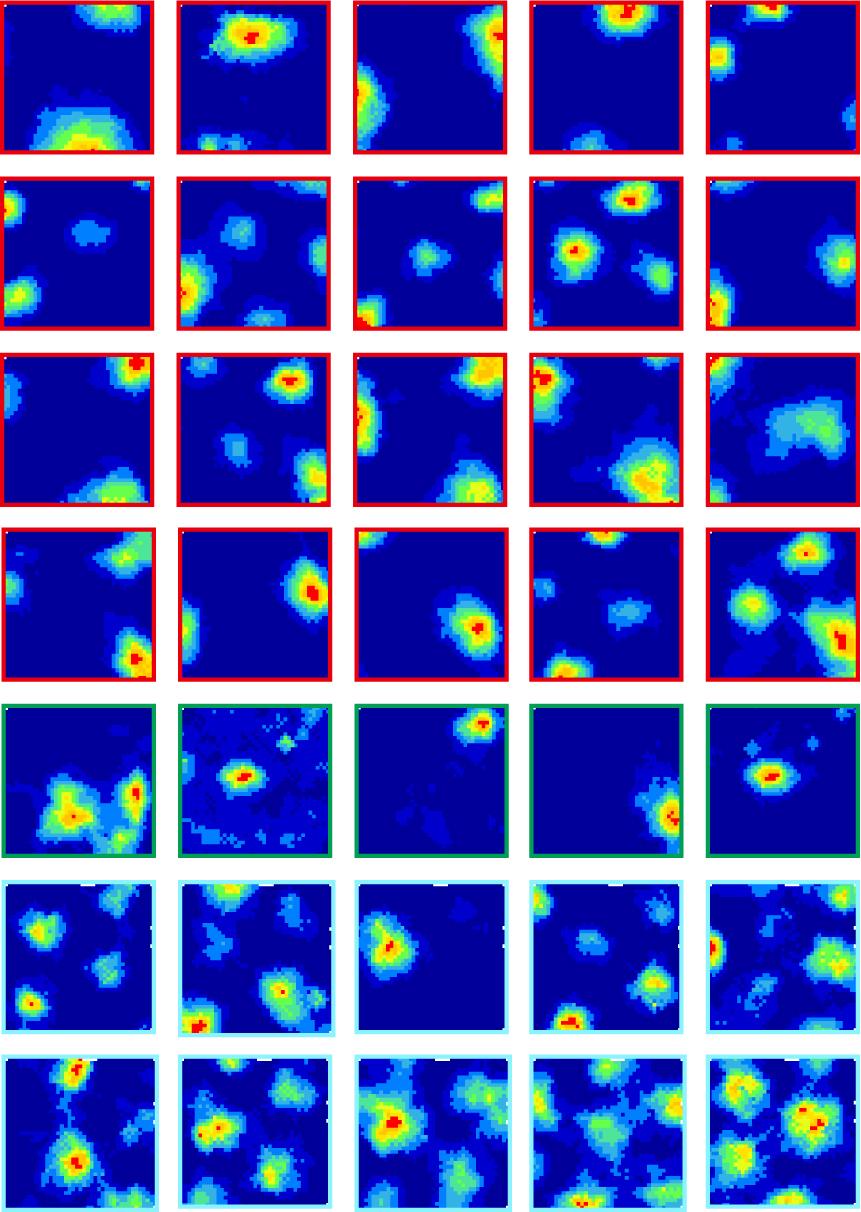
Developing Neuropixels 2.0 to stably track neurons over months
By April Cashin-Garbutt
During the first year of her PhD at SWC, Anna Lebedeva took a rotation in the joint lab of Professor Matteo Carandini (Institute of Ophthalmology, UCL) and Professor Kenneth Harris (Institute of Neurology, UCL), affiliate faculty of the SWC. It was here where she first started working with Neuropixels – a state-of-the-art technology allowing neuroscientists to simultaneously record across multiple brain regions.
Working closely with Nick Steinmetz, a postdoc in the lab and now an Assistant Professor at University of Washington in Seattle, Anna learned about the Neuropixels technology and was excited to get involved with a worldwide collaboration to develop a next-generation tool, Neuropixels 2.0.

Anna Lebedeva, PhD student at the Sainsbury Wellcome Centre and one of the first authors on the paper
Building on the success of the original Neuropixels probes
The original Neuropixels probes, released in 2017, were developed through a collaboration between scientists at HHMI Janelia Research Campus, the Allen Institute for Brain Science and UCL together with engineers at the nanotechnology company imec and the project was funded by Howard Hughes Medical Institute, Gatsby Charitable Foundation, Allen Institute for Brain Science and a Wellcome Trust grant to UCL (PI, J.O’Keefe).
Announced today by the Neuropixels Consortium and UCL, and described in a paper published in the journal Science, the new Neuropixels 2.0 probes build upon the success of the original Neuropixels probes to improve stability, among other features, so that recordings of the same neurons can be performed over longer time periods in small animals.
Neuropixels 2.0
“We can now routinely implant probes with over 10,000 recording sites in a single animal and record their neural activity over several months. This will open new avenues to study fundamental questions of how cognitive processes are supported by distributed neural ensembles and further reduce the number of animals used in research. Currently, we are simultaneously recording from large numbers of hippocampal place cells and entorhinal grid cells and looking at the interaction between the two” said Marius Bauza, Senior Research Fellow at the Sainsbury Wellcome Centre and co-author on the paper.
The new miniature recording probes are much smaller and lighter than their predecessors but haven’t lost recording capacity. There have been changes to the layout with the new tool providing four “shanks” – narrow filaments that enter the brain – compared to just one in the original Neuropixels. The number of recording sites has also been increased allowing the density of sites in a volume of tissue to be increased. The team liken the design change to positioning many microphones around a crowded room: if a neuron moves out of reach of one recording site, it’ll still be picked up by a neighbouring one.
“These probes are already revolutionising neural circuit research, and the Sainsbury Wellcome Centre together with colleagues from the greater UCL Neuroscience community can take pride in being part of their development from the beginning” commented John O’Keefe, Group Leader at the Sainsbury Wellcome Centre and co-author on the paper.

Simultaneously recorded grid cells (red) and place cells (green) using Neuropixels 2.0. Grid cells were recorded again from the same animal seven weeks later (cyan).
Developing Neuropixels 2.0
The project to develop Neuropixels 2.0 was led by Tim Harris, a senior fellow at the Howard Hughes Medical Institute (HHMI), alongside collaborators from UCL, Norwegian University for Science and Technology (NTNU), Neuroelectronics Research Flanders (NERF) and Champalimaud Centre for the Unknown, with funding from Wellcome.
The aim was to develop probes that could record the electrical activity from more individual neurons and track this activity over weeks – and even months. Recording from the same neurons over time is crucial for understanding how the brain changes with learning and experience. While 2-photon calcium imaging allows neuroscientists to track the same neurons over time, this technology only allows access to the surface of the cortex without disturbing the tissue. With Neuropixels, researchers can reach deeper structures in the brain and also track neural activity with higher temporal precision.
Tracking the same neurons over months
To ensure that the new Neuropixels 2.0 probes were recording from the same neurons over time, the team presented mice with a library of images and recorded from neurons in the visual cortex to check whether the responses were conserved.
As part of her PhD, Anna Lebedeva set out to determine how stable the recordings were over months. She tested Neuropixels 2.0 for over 300 days and found the tool produced very stable neural activity over this long time period.
“We know that in visual cortex there should be predictable responses to the same images over days. To test Neuropixels 2.0, we used an automated algorithm to match neurons based on the waveforms of their spikes and were able to confirm the neurons had the same visual signature meaning the new tool was successfully recording from the very same neurons over months” said Anna Lebedeva, PhD student at the Sainsbury Wellcome Centre and one of the first authors on the paper.
Neuropixels 2.0 probes
Testing Neuropixels 2.0
Neuroscientists in labs across the world are currently testing the latest prototypes of Neuropixels 2.0 and Harris and team hope the probes will be ready for more widespread distribution in 2022.
As part of the testing process, Anna has been using the new tools in her PhD project where she has been studying decision-making in mice. While previous studies focused on isolated brain areas, the interplay between the different regions was still unclear. Using Neuropixels, Anna has been recording from multiple brain regions to understand more.
“Neuropixels 2.0 was very advantageous for recording in dorsal hippocampus due to the shape of the region, which is elongated along the horizontal axis. The original Neuropixels probe penetrates the dorsal hippocampus but some sites are above and below the region, whereas with the four-shank Neuropixels 2.0 you are able to select channels so that all of the recording sites are within dorsal hippocampus” commented Anna Lebedeva.
Next steps for Neuropixels
Following on from developing the second generation of Neuropixels probes, the team are working on optrodes that combine recording with optical stimulation for optogenetic experiments.
“There is a possibility that we will soon have a new device, called Neuropixels Opto. We are about to receive prototypes of a version that emits light at two wavelengths. This means that simultaneously with recording neurons, we will be able to manipulate their activity using the same device, which opens up new exciting experimental opportunities” said Anna Lebedeva.